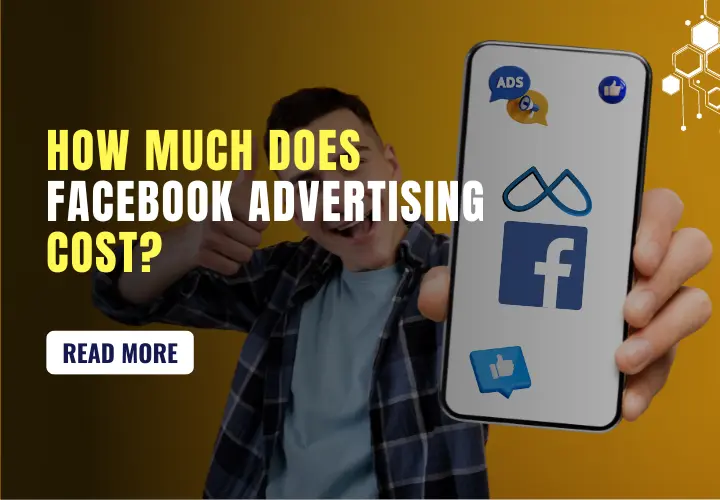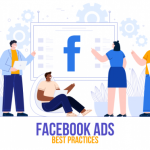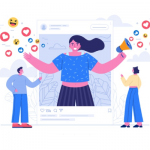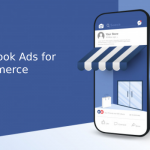How Much Does Facebook Advertising Cost?
Recently updated: August 27th, 2024
With over 3.049 billion monthly active users, Facebook offers plenty of opportunities to reach target audiences at scale. However, many small businesses wonder, What does it costs to advertise on Facebook?
Establishing realistic budgets requires understanding Facebook’s auction-based dynamic pricing based on competition, goals, audiences, and bids.
There are also tested best practices for economizing spending through detailed targeting, quality creatives, and landing pages.
Furthermore, while direct response conversions demonstrate a positive return on ad spends at a variable rate, the full lifetime value of customers acquired through broader brand exposure is an essential long-term metric.
Optimizing both budgets and strategies based on performance data takes some iterations. But Facebook’s vast reach and targeting capabilities make advertising an essential yet cost-effective growth channel for SMBs when executed strategically over time.
Facebook advertising works on a bidding model like PPC (pay-per-click) campaigns on Google. Advertisers can select a bidding model – Cost-per-click (CPC), Cost-per-thousand-impressions (CPM), Cost-per-lead (CPL), and Cost-per-acquisition (CPA) – while creating an ad campaign. It depends on how they want their audience to engage with ads and what marketing goals they have. So, the question here is how the Facebook ad auction works.
In this article, we will explore typical Facebook advertising costs and what impacts pricing, so you can effectively budget and tap into Facebook’s user base.
How Much Does It Cost To Advertise On Facebook?
|
Average CPC (Cost Per Click) |
22% of companies pay |
$0.26 – $0.50 |
|---|---|---|
|
Average CPM (Cost Per Impression) |
26% of companies pay |
$1.01 – $3.00 |
|
Average CPL (Cost Per Like) |
23% of companies pay |
$0.00 – $0.25 |
|
Average CPA (Cost Per Download) |
19% of companies pay |
$0.00 – $1.00 $4.01 – $5.00 |
It is important to consider that this data is average. Your business may vary in Facebook ad costs due to different pricing factors such as ad placement, target market, industry, and many more. You can use the above data as points of reference rather than as a standard.
Facebook Advertising Statistics:
- Facebook Reels has a potential advertising audience of 697.1 million users.
- The average cost-per-click of Facebook ads is $1.72.
- Facebook ads have an average CTR of 0.9% and a CVR of 9.21%.
- The industries with the highest Facebook CTR are:
- Legal advertisers – 1.61%
- Retail – 1.59%
- Apparel – 1.24%
- Beauty – 1.16%
- Fitness – 1.01%
- The average conversion rate (CVR) of Facebook ads is 9.21%. The industries with the highest CVR are:
- Fitness – 14.29%
- Education – 13.58%
- Employment & job training – 11.73%
- Healthcare – 11.00%
- Real Estate – 10.68%
- B2B – 10.63%
- Facebook’s global average revenue per user reached $9.62.
- An average Facebook user clicks 12 ads monthly.
Source: SocialPilot
Facebook Ad Auction
Before getting into the factors that influence Facebook advertising costs, let’s understand the Facebook ad auction and how it works. It helps advertisers to optimize their ad costs to achieve greater returns.
Here’s the step-by-step process of how the Facebook ad auction works:
- Log into your Facebook Ad Manager account to create a campaign.
- Choose your daily budget (how much do you want to spend daily on ads).
- Select what action you will pay for, like clicks, views, impressions, likes, or downloads.
- Build your audience using age group, location, gender, interest, and device targeting.
- Add creatives like images and videos to your ad copy.
- Now you can approve and launch your ad.
After all these steps, the Facebook ad auction happens when there is a chance to show ads. The following steps do happen during the process:
- Facebook grades every ad quality, estimated action rates, and potential ad bid.
- Facebook determines ad relevance using estimated action rates and ad quality.
- The total value of an ad is generated based on ad quality, bid, and estimated action rate.
- Facebook delivers the ad that wins the bid (ad with the highest total value).
Based on the above observations, you can easily determine which ad auction metrics matter most to your Facebook Advertising costs. You can lower your Facebook ad costs by optimizing the following metrics to achieve greater ad performance.
- Ad Bid
- Estimated Action Rate
- Ad Quality
- Ad Relevance
How does Facebook ad pricing work?
Facebook advertising costs are determined based on an auction-based system rather than fixed pricing. Essentially, advertisers bid against each other for the attention of specific Facebook audiences they want to reach.
So the amount you end up paying per ad depends on 4 key factors:
- Your Bid Amount: the maximum dollar amount you agree to pay per ad click or thousand impressions. The higher the bid, the more likely your ads get shown over competitors.
- Ad Competition: The more advertisers bid to reach the same audience as you, the more competition pushes up pricing for that ad real estate. Popular targets cost more.
- Campaign Goals: Optimizing for different objectives like video views, post reactions, or purchases carries different rates.
For example, link clicks are very affordable, at around $1 per click. But conversion events like registrations or sales fetch the highest bids of $50+.
4. Audience Targeting: Broad targeting of larger audiences generally costs less per impression.
But more specific, detailed target criteria shrink your reach but make your ads appear more relevant, garnering more engagement, which can raise total spending.
Facebook combines these factors using an algorithm that determines the minimum bid needed for your ad to hold its position and reach its intended audience.
If your goal is 100 clicks at a $1 bid but competition has increased, Facebook may start serving that same audience for $1.25 per click, raising your costs.
This fluid auction model allows Facebook to optimize relevance in feeds while maximizing ad earnings.
Key Factors Influencing Facebook Ad Costs
1. Campaign Objective
Optimizing campaigns for different goals like video views, engagement, or conversions significantly impact costs.
Simple link clicks average only $1 per click, while a purchase conversion may cost over $100 because more relevant, competitive targeting is needed to generate that valuable action.
2. Audience Targeting Parameters
Defining demographic factors like location, age, and gender, as well as interests, behaviors, and connections allows Facebook to identify the most relevant users for your brand.
But increased specificity shrinks reach, and the more niche the audience, the more advertisers must bid to compete by placing ads in front of that valuable traffic.
When you prefer to target an audience with broader interests, it will maximize your reach but reduce the overall performance and return. Low-value users often click on ads, but they don’t engage with call-to-action, which could result in low-performing campaigns.
On the other hand, when you target an audience with high-value attributes, you can reach a specific audience in a specific market which could result in more actions on your ads from your potential consumers. Well-defined Facebook advertising strategies help you generate more leads and sales with improved conversion rates throughout your campaign period.
3. Audience Size & Scaling Needs
Bidding thresholds and the total budget must expand to achieve a broader campaign reach once the initial core audiences are tapped out. Each successively larger targeting pool may cost incrementally more per conversion attained.
Planning budgets capable of scaling to the volume needed prevents losing momentum but does raise costs over time.
4. Ad Competition
Popular industries like insurance, loans, or eCommerce may involve dozens more competitors bidding for the same audience, driving up “pay to play” costs through auctions. Less saturated niches may be more budget-friendly to advertise in by comparison.
5. Ad Creative Quality
Visually compelling ads with clear, concise copy and calls-to-action tend to earn higher engagement and conversion rates, signaling relevancy.
Facebook rewards relevant performance with lower minimum bids required to sustain ad placements and spending. Poor-performing creatives cost more per result.
6. Ad Text Length
Longer ad copy requires more time or effort for users to consume versus short, scannable descriptions. To compensate for the increased attention needed, extended copy requires higher bids to earn feed placements compared to brief, targeted messages.
7. Landing Page Alignment
A quality score assesses how aligned your ad messaging is to the actual page visitors land on. Highly relevant pages keep visitors longer and signal to Facebook appropriate targeting. Mismatched pages cause visitors to quickly return to Facebook.
Too many poorly aligned clicks indicate irrelevant messaging and raise your minimum bids required until improved to compensate for detrimental experiences signaled back to Facebook’s algorithm by rapid exits.
8. Historical Bidding & Budgets
Facebook advertising utilizes AI plus your manual bidding history to optimize suggestions, balancing cost and volume.
If you manually increase budgets over time trying to force more reach, Facebook interprets implicitly that you’re willing to spend more, raising subsequent recommendations.
9. Location Targeting
Geographic targeting by city or country plays a major role in the costs per conversion determined through the auction dynamics.
Campaigns optimized for developed countries with mature Facebook usage and adoption see the most competition, raising required bids significantly higher than those in developing markets that are still establishing consumer behaviors on the platform.
10. Platform Targeting
Cross-platform campaigns, including Facebook and Instagram, access wider audiences, which boosts potential volume but requires large budgets to sustain bidding at the scale needed across both properties as costs for additional placements add up incrementally. However, segmentation across platforms allows tighter focus on niche priorities on each uniquely if desired based on product-market fit and cost factors.
Monitoring how campaign performance aligns with these pricing variables provides opportunities to optimize Facebook’s approach over time.
Also Read: How to Seamlessly Use ChatGPT To Generate Facebook Ads?
Average Facebook Ad Costs
Here is a more in-depth look at the average cost of Facebook ads:
1. Brand Awareness Campaigns
- Cost per 1,000 impressions (CPM): typically ranges from $0.60 to $1.20. The average is around $0.80-$1.
- Example: If you get 10,000 impressions on an awareness ad, it would cost $8-$10 on average.
2. Traffic Campaigns
- Cost per click (CPC): ranges from $0.50 to $2 on average. Very targeted traffic tends to come at a higher cost.
- Cost per 1,000 impressions (CPM): $2 to $8+ for traffic campaign ads on average.
- Example: If you got 300 clicks for $1.50 per click, the cost would be $450.
3. Engagement Campaigns
- Cost per engagement: This varies widely depending on the type of engagement reactions, shares, comments, event responses, etc. Most range between $0.50 and $3.00 per engagement.
- Video views tend to come at a lower cost, around $0.10 to $0.30 per view.
4. Conversions Campaigns
- Cost per conversion: All conversion types app installs, purchases, signups, lead generation forms, etc.—can vary greatly. $1 per conversion up to $12+ for high-ticket or competitive items.
- E-commerce verticals tend to run from $8-$12+ per purchase conversion since cart value is higher.
- Lead generation tends to convert from $1 to $4 on the lower end.
Costs run the highest for conversion-focused campaigns, but they also deliver the most tangible business results if optimized well.
Brand awareness and engagement campaigns lay the foundation and work to move users down the funnel before targeting conversions. Continually test and track results to maximize your ad ROI.
Tips for Lowering Facebook Ad Costs
1. Set Detailed Targeting Options
Facebook advertising allows you to target users based on demographics, interests, behaviors, and more. Setting detailed targeting parameters allows you to show your ads to only users more likely to be interested.
For example, targeting men ages 18-45 with interests related to fitness equipment will allow you to reach your target market and avoid wasting spend.
Detailed targeting translates to higher relevancy, higher CTRs, and lower average CPCs/CPMs.
2. Optimize for Conversions Earlier
Campaigns optimized for conversions like purchases or lead generation forms tend to have higher costs per click/conversion. Start optimizing for a conversion objective earlier and let Facebook’s algorithm continue to refine the targeting over time.
This allows you to reach qualified users interested in converting at a lower average cost per conversion.
3. Split Test Ad Sets
Continually testing different targeting and creative approaches allows you to double down on what provides the lowest cost per conversion.
Try narrower audience segments, interest targeting, different creative elements, etc., and reallocate spend towards the ad sets providing conversions at the lowest costs.
4. Set Conversion Bid Strategies
Use bid strategies in the campaign settings, like “Lowest Cost” or target CPA strategies. Facebook automatically adjusts bids to target users likely to meet your conversion goals for the lowest possible cost.
5. Create Quality Score
Having compelling creative and a high click-through rate/relevancy score will lower your costs over time per click/conversion. Shoot for at least a 7+ out of 10 on the quality score.
6. Test Retargeting
Remarketing to users who have previously engaged with your brand/site carries a significantly lower cost as they have indicated existing interest.
Start with a conversion campaign to capture conversions from engaged users before expanding into new cold audience targeting.
There are always opportunities to expand the reach and lower CPCs through testing different elements and letting Facebook’s algorithm optimize based on performance history.
Set a target cost per conversion and have Facebook automatically bid to stay within that range.
Also Read: Enhance Your Business Exposure with Facebook Advertising
Calculating Your Potential ROAS
Before determining day-to-day budgets, having an overall grasp of potential return on ad spend (ROAS) is crucial for financial planning and expectations.
Consider historical website conversion rates on traffic to estimate sales from Facebook’s audience reach. Review the typical customer lifetime value (LTV). Cross-reference that against standard cost per conversion benchmarks.
For example, if 1% of site visitors convert and the average order value is $50 on a $100 CPA, that’s $50 in revenue per $100 ad cost. This generates an ROAS of 0.5x for losing money.
However, given an average customer, an LTV of $500 that grows over the years – a 0.5x ROAS on a $100 ad cost supported by broader branding exposure suddenly creates highly profitable exposure.
Review both immediate sales ROI as well as full long-term value based on your business model when conceptualizing ad budget scale.
Conclusion: Managing Your Ad Cost Journey
In closing, calibrate initial Facebook budgets based on campaign objectives and targets, then expand methodically through testing. Mastering Facebook advertising takes some iteration and sustained effort.
However, the platform’s vast reach, detailed targeting, and optimization make it one of the most cost-effective ways to boost brand growth when executed strategically.
Latest posts by Vijaya Tyagi (see all)
Important Tips & Tactics to Boost Your Website Reputation!! - October 16, 2025
14 Years, Thousands of Campaigns, Countless Stories – And We’re Just Getting Started - September 29, 2025












